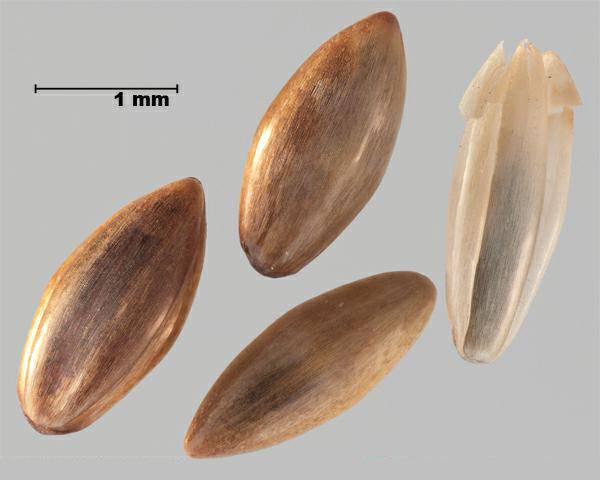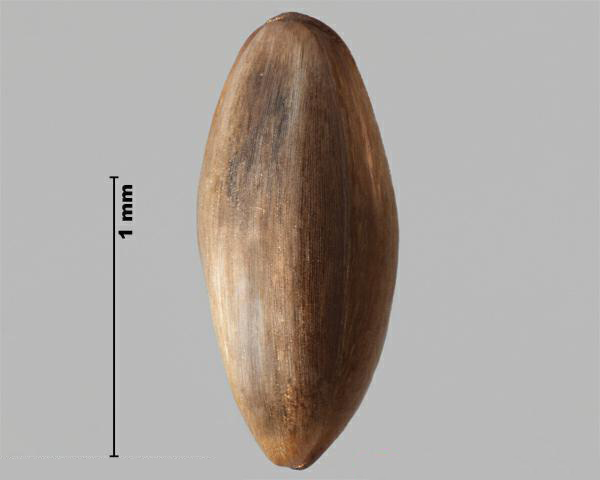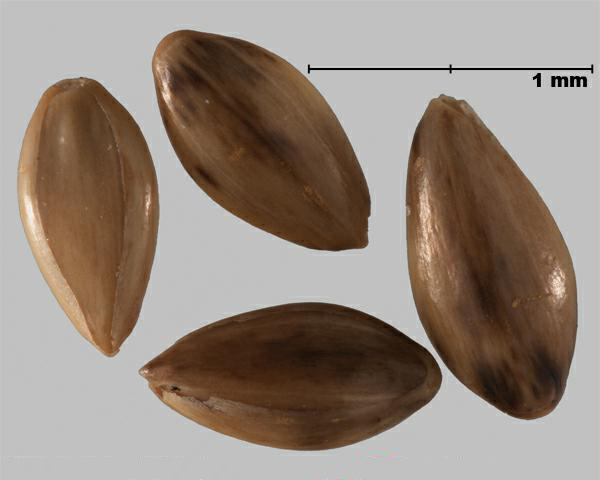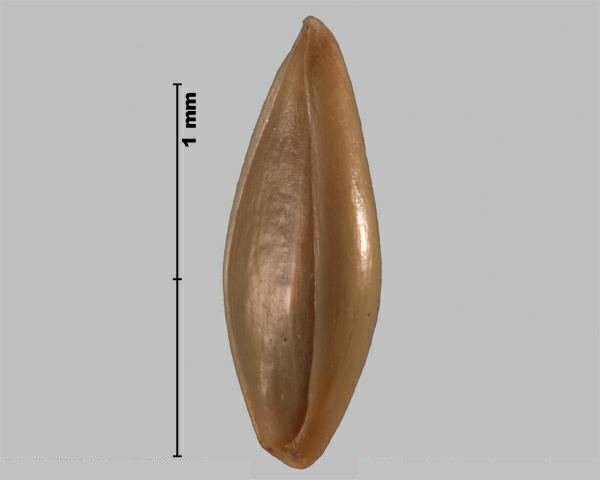Family
Poaceae
Common Name
Spring milletgrass
Regulation
Prohibited Noxious, Class 1 in the Canadian Weed Seeds Order, 2016, 2016 under the Seeds Act. All imported and domestic seed must be free of Prohibited Noxious weed seeds.
Distribution
Canadian: Absent from Canada (Brouillet et al. 2016Footnote 1).
Worldwide: Native to northern Africa, Europe and temperate Asia (USDA-ARS 2016Footnote 2). Introduced to Idaho (USDA-NRCS 2016Footnote 3).
Duration of life cycle
Annual
Seed or fruit type
Floret
Identification features
Size
- Floret length: 1.7 - 2.0 mm
- Floret width: 0.8 - 1.0 mm
Shape
- Floret is oval, slightly diamond-shaped; one side flat (plano-convex)
Surface Texture
- Florets are smooth and glossy
Colour
- Florets are a medium to light brown or a straw yellow when immature
- Surface of floret is covered in brown streaks that give the appearance of wood grain
Habitat and Crop Association
Cultivated fields, field edges, pastures (Barkworth et al. 2007Footnote 4, Callihan et al. 1999Footnote 5). Reported as a weed of winter wheat and other crops in Idaho (Barkworth et al. 2007Footnote 4).
General Information
In Europe, spring milletgrass is a pest of winter wheat and usually travels with the grain to be planted with the crop. In North America, it is only known to occur in Idaho, where it has infested winter wheat crops and the surrounding pastures since 1987 (Barkworth et al. 2007Footnote 4). Spring milletgrass is reported to prefer light soils that are damp in the winter months (Tutin et al. 1980Footnote 6).
Similar species
Giant panic grass (Panicum antidotale)
- Similar size, oval shape and brown colour to spring milletgrass florets.
- Giant panic grass florets are up to 0.5 mm longer than spring milletgrass, lighter colour with thick dark brown streaks on the surface, spring milletgrass florets have a wood-grain appearance.
Photos



Similar species

